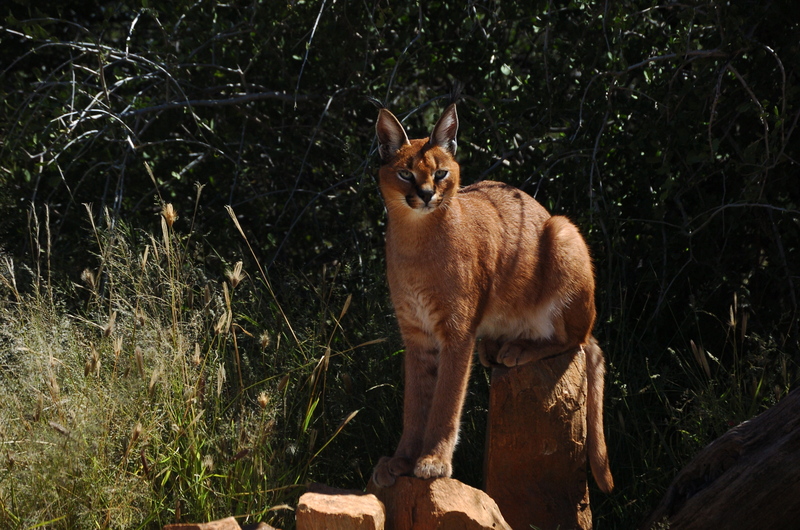|
| 질의: wild cat | 결과: 601번째/880 | |
caracal, desert lynx (Caracal caracal)
| 제목: | caracal, desert lynx (Caracal caracal)
| | 올린이: | Wiki Photos (---@---.---)
| |

| 해상도: 2464x1632
파일크기: 2013982 Bytes
촬영일: 2006:04:22 10:55:40
사진기: NIKON D2H (NIKON CORPORATION)
F number: f/5.6
Exposure: 10/2500 sec
Focal Length: 1000/10
등록시간: 2017:03:29 15:34:56
|
Deutsch: Junger Karakal in Namibia
Date 22.04.06
Author S.Geberth
Source: https://commons.wikimedia.org/wiki/File:Karakal_namibia.jpg
The caracal or desert lynx (Caracal caracal) is a medium-sized wild cat native to Africa, the Middle East, Central Asia and India. Its natural habitat includes semi-deserts, open savannas, shrublands, moist woodlands and montane forests. The caracal is placed in the family Felidae and subfamily Felinae.
|
댓글 |
|---|
| | 손님 |
|
Scientific Name: Caracal caracal (Schreber, 1776)
Common Names: Caracal, Desert Lynx, African Caracal, Asian Caracal, [French] Lynx Du Désert, [Spanish] Lince Africano
Synonyms: Lynx caracal (Schreber, 1776), Felis caracal (Schreber, 1776) |
^o^
동물그림창고 똑똑전화 누리집
^o^
|
|
|

